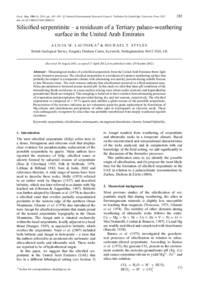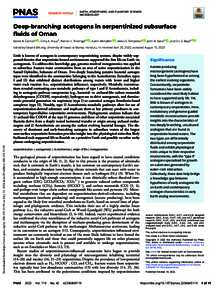Document
A Residuum of a tertiary palaeo-weathering surface in the United Arab Emirates.
Identifier
DOI: 10.1017/S0016756812000325
Contributors
Styles, Michael T., Author
Publisher
Cambridge University Press.
Gregorian
2013-05
Language
English
English abstract
Mineralogical studies of a silicified serpentinite from the United Arab Emirates throw light on the formative processes. The silicified serpentinite is a residuum of a palaeo-weathering surface that probably developed in a temperate climate with alternating wet and dry periods during middle Eocene to late Miocene times. The rock textures indicate that silicification occurred in a fluid-saturated zone. Silica precipitation is favoured at near-neutral pH. In this study we infer that these pH conditions of the mineralizing fluids could arise in a near-surface mixing zone where acidic meteoric and hyperalkaline groundwater fluids are mingled. This mingling is believed to have resulted from alternating processes of evaporation and precipitation that prevailed during dry and wet seasons, respectively. The silicified serpentinite is composed of > 95% quartz and exhibits a ghost texture of the protolith serpentinite. Preservation of the textures indicates an iso-volumetric grain-by-grain replacement by dissolution of Mg-silicate and simultaneous precipitation of either opal or microquartz as siliceous seeds. These were subsequently overgrown by silica that was probably remobilized from deeply weathered regolith elsewhere.
Member of
ISSN
0016-7568
Resource URL
Category
Journal articles


